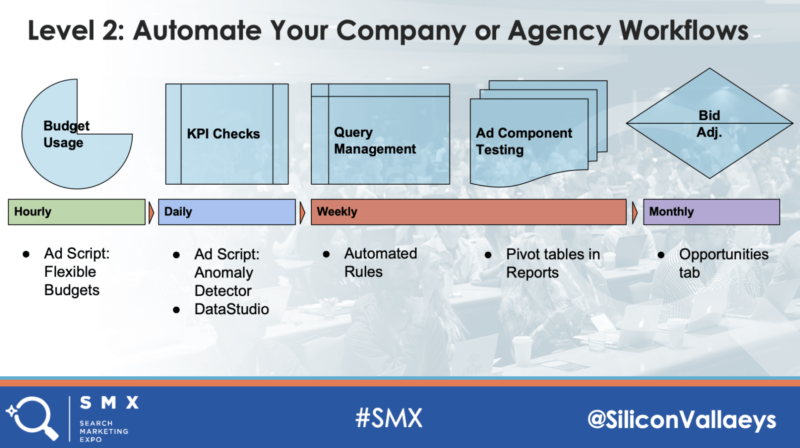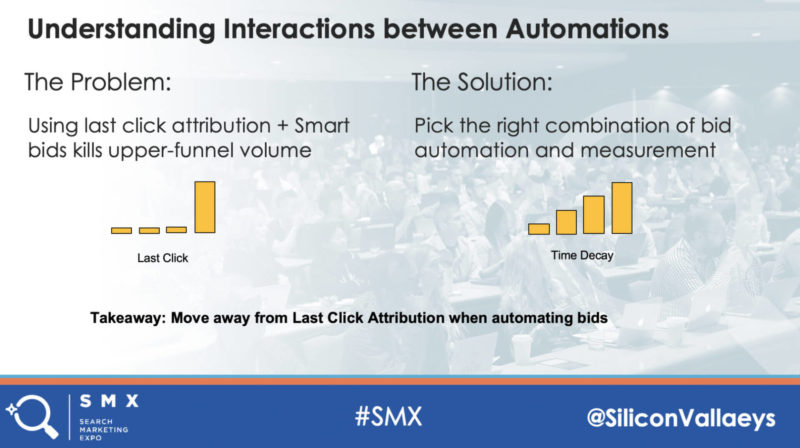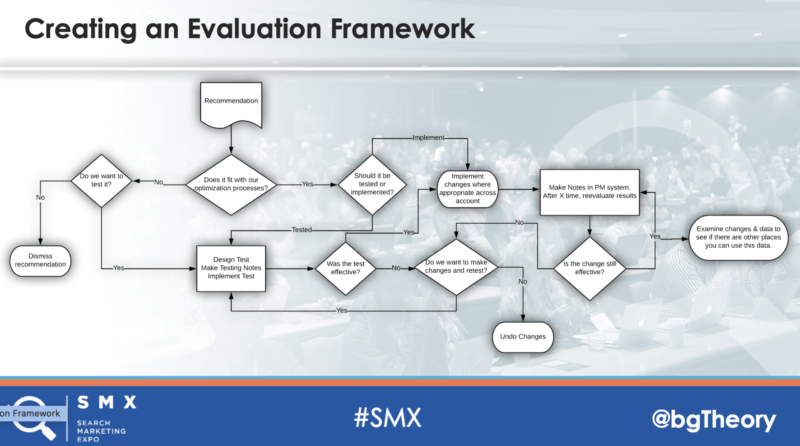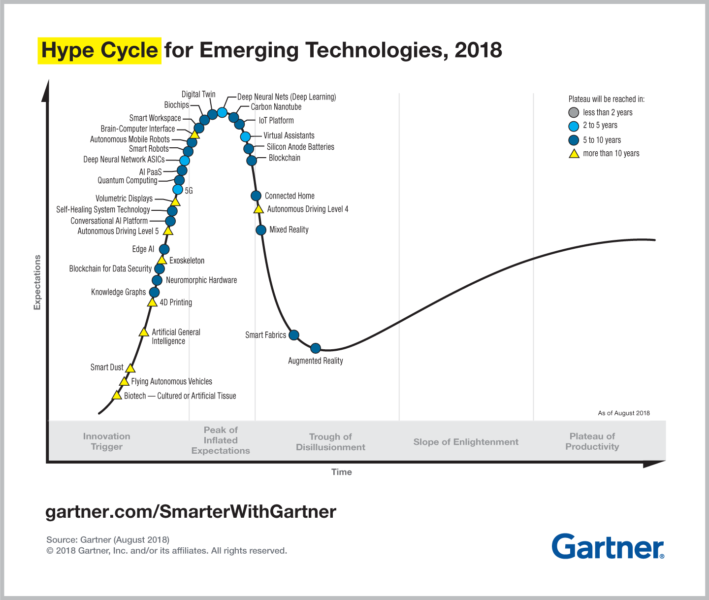PPC and machine learning: Where do we draw the line on automation?
During SMX Advanced, Frederick Vallaeys and Brad Geddes examine automation and need to understand the potential impact of unintended consequences.
A behemoth of a topic obviously requires some industry heavyweights to take it on at SMX Advanced 2019, so it was no surprise to see Frederick Vallaeys of Optmyzer, Inc. and Brad Geddes of AdAlysis.
Before we dive into the insights shared during this session, it’s important to note one key theme that was prevalent throughout. That theme is the idea that we don’t need to automate everything. While it can be easy to imagine a fully automated future where, at the touch of a button, everything falls into place – that is simply not the reality of the world we are facing. Indeed, the digital transformation is particularly challenging for this exact reason – some things should be automated and some things absolutely shouldn’t – but where do we draw the line?
Insights From Frederick Vallaeys
Hot off the press, Fred just released an excellent new book, entitled “Digital Marketing in an AI World: Futureproofing Your PPC Agency” which I started reading on the flight to Seattle, and honestly, couldn’t put it down! Many of the highlights of his book were featured during his session.
As one of Google’s early employees, Fred has been around long enough to see how the world of PPC has evolved and has, himself, provided a number of functional automation solutions to the wider PPC community.
Fred kicked off his session talking about the key reasons to automate PPC processes, specifically to:
- Save Time (Reducing costs to grow the bottom line)
- Improve Quality & Reduce Churn
- Allow for Scale ( in order to make more money)
These reasons, of course, are not exclusive to the world of digital marketing but are key considerations for automation across all industries. The key idea here is, just because we can automate something, doesn’t necessarily mean we should. In order to prioritize our automation work, we need to leverage a Degree of Impact framework. Here’s one that Fred shared during his presentation:
This sentiment was echoed by Brad Geddes as well, and fundamentally means, “in-platform account management is becoming easier” while “cross-platform advertising is making it harder as users fragment and walled gardens prevent the sharing of audience/performance data.”
Fundamentally, the role of the PPC Manager is being reshaped by the waves of automation available to both platforms and advertisers. The PPC community has often pushed back on Google’s automation technology, claiming the new solutions don’t work, or that a human can still outperform a computer. But, as Fred notes – perhaps, this is a failure of the PPC manager not understanding how to train a machine correctly and giving up too quickly. This idea is key, and will likely be the main trend we see in future generations of PPC experts – instead of knowing how to manually optimize, we must instead think about how to feed data into the machine and allow for the machines to optimize from there. By understanding core principles of machine learning, the best PPC managers in the future will take a data science approach to campaign management, which in turn, will enable them more time to actually become good marketers.

The evolving role of the PPC manager
Moving beyond the evolution of the PPC Manager to handle platform-specific automation, Fred jumped into the topic of automating workflows associated with PPC management. While it may appear to be a backhanded compliment for one of my favorite companies from our host city (Seattle), I absolutely loved this quote from Fred:
“Starbucks doesn’t make the world’s best coffee, but they do have the world’s best process.”
– Frederick Vallaeys
And, it’s true – Starbucks has scaled because of their ability to bring that local, curated experience to thousands of city blocks around the world. At the end of the day, a defined, repeatable process is required to scale, and that means we need to look at the automation of your organization’s management processes.
Fred provided several great examples and a mapped hierarchy of process that other organizations can use to start compartmentalizing their processes:

Further, Fred shared some great insights regarding Automation tactics including:
- Tactics are shifting – The old way was crunching numbers and looking at spreadsheets.
- PPC Marketers need to become MORE marketers and think about contextual alignment – setting the right goals and ensuring the measurement systems are correctly in place.
- WE MUST FOCUS ON GIVING THE MACHINES THE RIGHT GOALS IN ORDER TO TRAIN THEM CORRECTLY.
Yes, I decided to type in all capslock for that last one, but it’s a fundamental truth that we need to fundamentally rethink about we engage with the machine learning (ML) based future.
Next, Fred took us to an advanced place as we started to think about the nature of automation layers interacting with each other. This is a key concept to keep in mind with every automation, and we need to ask ourselves:What could the unintended consequences of this automation be, and what could it interact with?
One particular example looked at the relationship between bidding automation and the selected Attribution model applied to the associated goal in Google Ads:

Finally, Fred summed up his session with a few, key insights:
- The engines are unlikely to be great at cross-platform automation.
- Automations are point-solutions. Humans still need to define the overall process.
- Your role as a PPC expert will shift from tactical to strategic.
Insights from Brad Geddes
“I have a confession to make – I don’t *actually* want to automate everything”
– Brad Geddes
Brad is probably one of the smartest people in the world of PPC, and to see him present a session (rather than his typical curation role on the SMX team) was nothing short of fantastic. Indeed, the idea that we want to, or should, automate everything is absurd, but there is a happy medium to be found. For one, functions like reporting should absolutely be automated, did you know that a recent study by the AdAlysis team found that “The average agency spends 8 days a month creating reports” – that’s 26% of our time dedicated to a repeatable task!
Brad kicked off by talking about the various tiers of automation that can exist and their respective core benefits:

When we think about the way we should be using automation, it’s important to keep in mind that “Automation is the Machine recommending optimizations – BUT you need to decide what to do.” These recommendations sit within 2 core categories:
- Optimizations: The rules for the category are “debatable”
- Pause poor performing ads
- Use rotate ad serving
- Pause duplicate keywords
- Use negatives to stop multi-ad group query serving
- Repairs: Everything is useful
- Missing extensions
- Keyword conflicts
- Broken URLs
But before we even look at recommendations, you need to know your KPIs, know what will actually change as a result (education), understand other changes that might occur (unintended consequences), and the general workflow. In order to understand if we should act on the recommendations provided, Brad shared a great Evaluation Framework:

If you can’t make a workflow then you can’t automate it, you can’t repeat it, and you can’t be consistent in what you do. Be sure to look at your recommendation and ask:
- Does this fit for how we think accounts should be optimized?
- Should we test it? Sure, put a test in place and actually run a test, rather than making blind modifications.
- Did it work? If yes, should you now roll it out in other places. You often do not want to roll out account wide as that can have a lot of impacts
Additionally, when making changes based on automation recommendations, you make a note of what you did – why, and when?
- Avoid making the same mistakes twice by documenting your iteration process.
- Project management systems are probably your most powerful tool in Paid Search because it keeps everyone on the same page with what actually happened.
- Remember, Google will not remind you of a change you may have recently made that has yet to truly show it’s impact.
Next, Brad tackled the topic of unintended consequences with a client example where a recommendation was actually impacted by other settings:
- Client example: eCPC – Target CPA for a client – after three weeks, it was almost double than what they were looking for. Why didn’t it work? They had device bid modifiers in place (+100% for Desktop, -25% for mobile) but the machine is using those and is therefore unable to optimize correctly.
- When you switch to any automated ad systems, it changes ad rotation – this is a big deal as you can move away from your actual best ads (highest converting vs. highest CTR)
One of the big ideas that Brad shared is to always ensure that any automation will follow the same rules you do, for example, if an automation, such as a bid-modifier by time of day is in place, this can be heavily impacted by conversion volume and may not always follow the best practices set out by a human.
Finally, Brad summed up his session with a few, key insights:
- Recommendations are great starting places to determine what to automate vs use a workflow.
- Always understand how the automation works.
- Put a recommendation & automation evaluation workflow in place.
The State of Automation
If there was a Gartner Hype Cycle specific to the world of PPC Automation, I believe we would be descending rapidly from the Peak of Inflated Expectations, and adjusting to the rapids within the Through of Disillusionment. As mentioned at the outset of this article, we are at an inflection point in the world of PPC. It is now when we set forth towards our ML-driven future and we must all embrace the future of intelligent automation, albeit cautiously and with an understanding of the potentially massive impact of unintended consequences.

